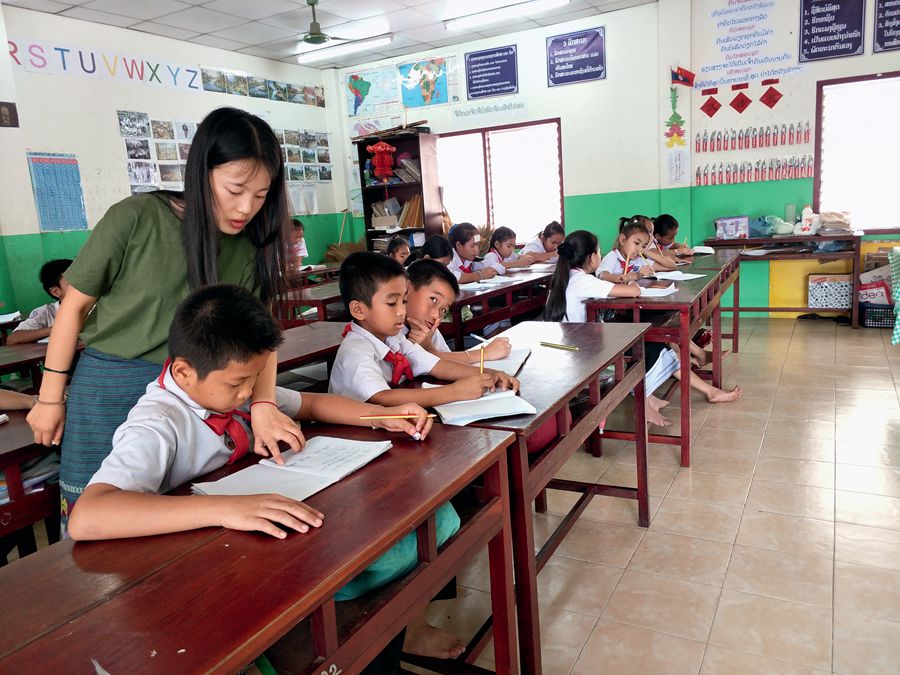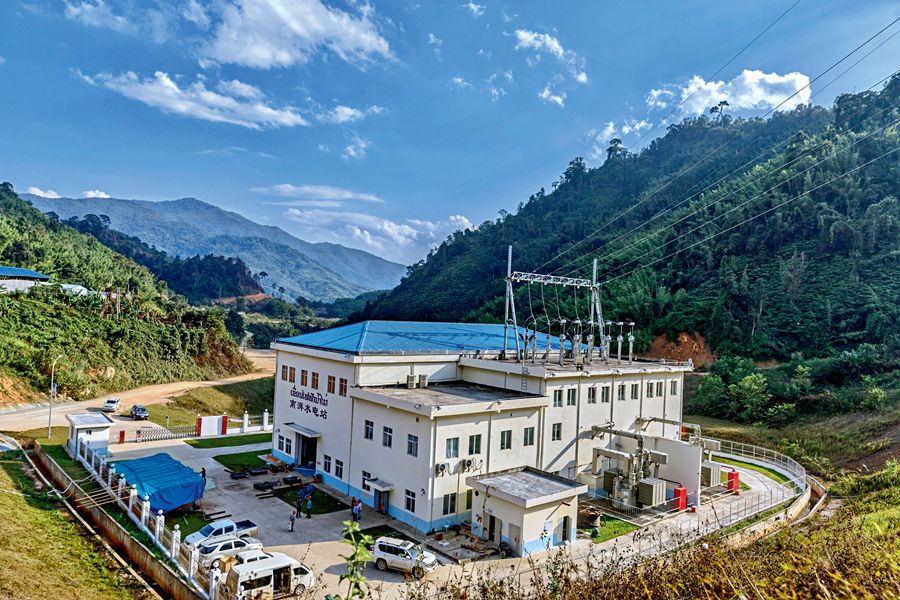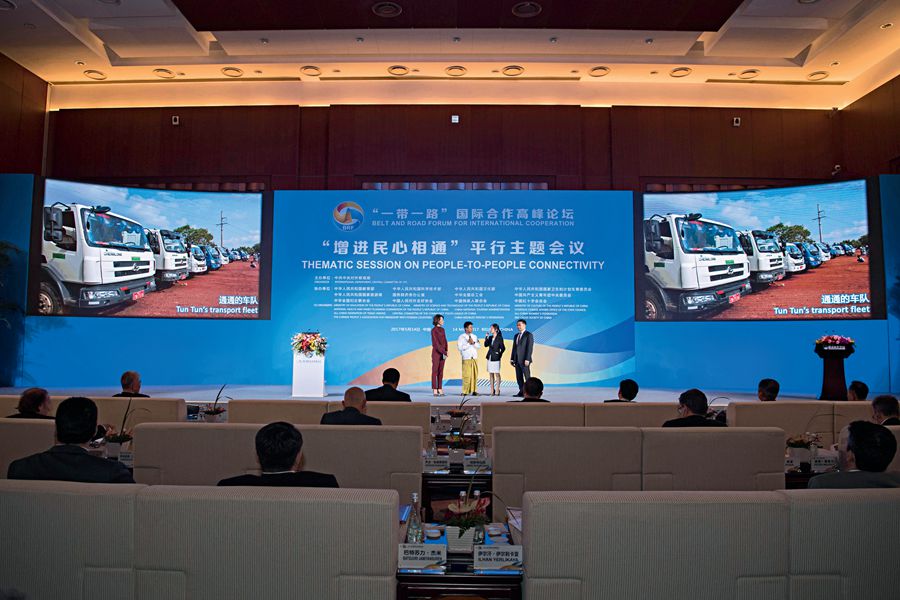“Since childhood, my hometown had been suffering power outages. Later I went to China to study hydropower. After graduation, I came to work at the Nam Phay Hydropower Station built by China North Industries Corporation (NORINCO), and witnessed tremendous changes in my hometown,” said Xaysee, a young man from Laos. This is an example of the change brought by the Belt and Road Initiative to the partner countries, the epitome of strengthening people-to-people ties.
Chinese President Xi Jinping pointed out that close people-to-people ties provide a key foundation for the Belt and Road Initiative (BRI). Jointly building the Belt and Road is not just about economic cooperation, but also represents an important way to improve the global development model and global governance, and promote the healthy development of economic globalization. The realization of these goals is inseparable from solid social support attained through the improvement of people’s livelihood.

Lin Jieyu, a 23-year-old volunteer teacher, can always turn the boring Chinese classes into compelling and dynamic interactions.
The BRI has been progressing for almost six years. Over that period of time, China and the partner countries have witnessed increasing people-to-people exchanges and achieved fruitful results. It has strengthened the ties among the people, injected vitality for development, and made ordinary people’s dreams come true.
Empowering the People
Known as the storage battery of the Indo-China Peninsula, Laos is rich in water resources. However, in some remote mountainous areas, the lack of power supply has seriously affected production and the lives of local people.
“During my childhood, I lived in an impoverished mountainous area without electricity, and the whole village was dark in the evening. At that time, I had a dream to help my hometown get electricity in the future,” said Xaysee.
From his high school geography textbook he knew that China had the world’s largest hydropower station, the Three Gorges Hydropower Station. “My country is also rich in water resources. I often thought that if there is a chance, I will go to China and study hydropower technology.”

The Letpadaung Copper Mine Project.
From childhood to youth, Xaysee never changed his pursuit of light. After graduating from high school, he was sent to the Yellow River Conservancy Technical Institute in China with excellent academic performance, as one of the three students from Xaisomboun Province of Laos to study in China for free.
After graduation, Xaysee returned to Laos and was assigned to work at the Nam Phay Hydropower Station to ensure the normal operation of the equipment. The NORINCO also offered his wife a job in the canteen of the power station so that they no longer had to live apart.
“Now, not just our village, but the entire province has sufficient electricity supply,” he said, adding that Chinese companies also built a new migrant village for the poor and public facilities such as roads, markets, stations, hospitals, and schools.
“Chinese companies help us train people in various skills such as in textiles and livestock breeding to increase our income,” he added, saying that now everyone’s life has improved to an extent they could not even think of before.
With the help of Chinese companies, Laos’ national power construction has developed rapidly, but there are still some remote mountainous areas with no access to power supply. Xaysee hopes that he can continue to work at the hydropower station to change the situation.

The Nam Phay Hydropower Station.
The Nam Phay Hydropower Station is a milestone project for NORINCO to actively respond to the BRI and promote the economic cooperation between China and Laos. It is a major achievement for the two countries to deepen mutual trust, mutual assistance, and mutual benefit.
The project was officially put into operation in November 2017. With a total investment of US $218 million, the power station has an installed capacity of 86 megawatts, and generates electricity of 419 million kWh annually. At present, all electricity generated from the hydropower station is integrated into the Lao national power grid, providing stable power supply to its central regions.
For win-win results, NORINCO established a joint venture with local partners and shared and transferred its technologies, standards and management expertise in building the hydropower station.
Khammany Inthirath, Lao Minister of Energy and Mines, hailed the hydropower station as a major livelihood project in Laos.
Kindling the Dream of Getting Rich
In the construction of the Belt and Road, Chinese enterprises follow the principle of achieving shared growth through discussion and collaboration, actively fulfill their social responsibilities, and work for the prosperity of local people.

The scene of the Session on People-to-People Connectivity of the Belt and Road Forum for International Cooperation.
Tun Tun, 37, comes from Letpadaung in northwestern Myanmar. According to him, since the construction of the Letpadaung Copper Mine, the life of the people residing nearby has become better and better.
The project in Letpadaung is a large-scale project invested and developed by Wanbao Mining Ltd., a subsidiary of NORINCO, with a total investment of more than US $1 billion and a production cycle of 30 years. It is a landmark demonstration project along the Belt and Road.
“The village and houses were built by Wanbao. Our villagers used electricity and tap water for the first time, and our jobs are also provided by Wanbao,” said Tun Tun. In the past, local farmers depended on nature for food, and could not earn much money throughout the year.
Wanbao devoted great energy to improving local people’s life. It funded the construction of new villages and water and electricity facilities for the relocation of villagers. To solve employment problems, the company supported a series of small and medium-sized business projects in transportation, construction, cement pipe making, and livestock breeding.
At present, new villages and towns around the copper mine project are taking shape. Thanks to supporting industries and the sustainable economic model brought by the mine project, local people are shaking off poverty and getting rich.
In order to let the villagers gain more skills, Wanbao has set up a series of technical training courses such as driving and breeding, and purchased small equipment such as oil presses. With the know-how and equipment, local people are able to start up their own businesses.
“Our life is getting better day by day,” said Tun Tun. In 2017, he registered a company engaging in freight transport and engineering contracting. “Now I have two trucks, two loaders, and one off-road vehicle.” To him, it feels like a dream to gain what he has.
In order to help the local people get rid of poverty, Wanbao has launched a number of projects including brickyards, water purification plants, telegraph pole factories, chicken farms, and vegetable greenhouses. With the implementation of these projects, the local poor will be able to live a prosperous life and have their income multiplied.
Moving into new houses, finding new jobs, and living a happy life are the dreams of many poor people. Along the Belt and Road, Chinese workers are helping locals get rid of poverty and kindling the dreams of every ordinary people.
Drawing the Distance Closer
Under the Belt and Road Initiative, the distance between China and the world has become closer. In addition to economic cooperation with the partner countries, exchanges in education and culture are also becoming increasingly active.
In June 2012, the China Foundation for Peace and Development (CFPD) learned about a dilapidated school in Chanthabouly District of Vientiane, Laos. Immediately, it made the school renovation as its first project for people’s livelihood in Laos.
According to Yao Yuwen, who led the aid project, the CFPD funded the construction of an 800-square-meter two-story teaching building on the original site of the school in the same year.
In March 2013, in order to further improve the teaching conditions, the foundation also funded Chinese teaching programs and the purchase of stationary. Besides, a faculty apartment was built.
In May 2013, teachers and students moved into the spacious and bright classrooms built with the help of the foundation. According to Yao, the school’s teaching conditions and facilities are among the best in the region. It was thus rated an exceptional school by Vientiane, capital of Laos.
This school also features Chinese programs. The CFPD has been sending Chinese volunteer teachers to the school, promoting education and cultural exchanges between China and Laos.
Lin Jieyu, a 23-year-old volunteer teacher, came to the school in 2018. She can always turn the boring Chinese classes into compelling and dynamic interactions.
“When teaching some new Chinese words, we print the pictures of each word in advance. Based on the pictures, [the students] will understand what the words mean easily. Sometimes we draw the picture. We also let students draw the meaning of words when learning new words,” she said, adding that such a teaching model can stimulate their interest.
Lin and another volunteer Yao Changhua are not only responsible for the Chinese language classes, but also help the children learn more about traditional Chinese culture in the process of learning.
By teaching students ink painting, calligraphy, paper-cutting, and Chinese knots, the two Chinese teachers expose local students to the Chinese culture. The cultural experience class is well received among students. The two Chinese teachers are well aware of the great responsibility on their shoulders while feeling contentment from inner hearts.
During their interaction with local teachers and students, the two Chinese teachers gradually learned about the customs and culture of Laos. They understand that cultural exchanges can draw peoples closer. They also said that the more the contacts they had with the locals, the more deeply they comprehend this principle.
Students there are getting a better understanding of China through learning Chinese. “In their eyes, China has ample resources and sufficient funds. The Chinese culture is also very interesting. The ink might not smell well, but allows creation of a beautiful painting; Chinese lyrics are hard to remember, but they are sonorous and forceful; paper-cutting is difficult to learn, but it has many beautiful meanings; and the hospitable Chinese always help each other,” said Lin.
Many students said that if there is any opportunity to further study in China in the future, they are willing to make their own contributions to the trade and cultural exchanges between China and Laos.
The education and cultural exchanges under the Belt and Road Initiative is not a one-way cultural export, but a two-way communication. The purpose is to form a landscape for people-to-people exchanges that highlight mutual appreciation, mutual understanding, and mutual respect. “It is the cultural understanding that enables unlimited possibilities of communication and cooperation,” said Lin.



